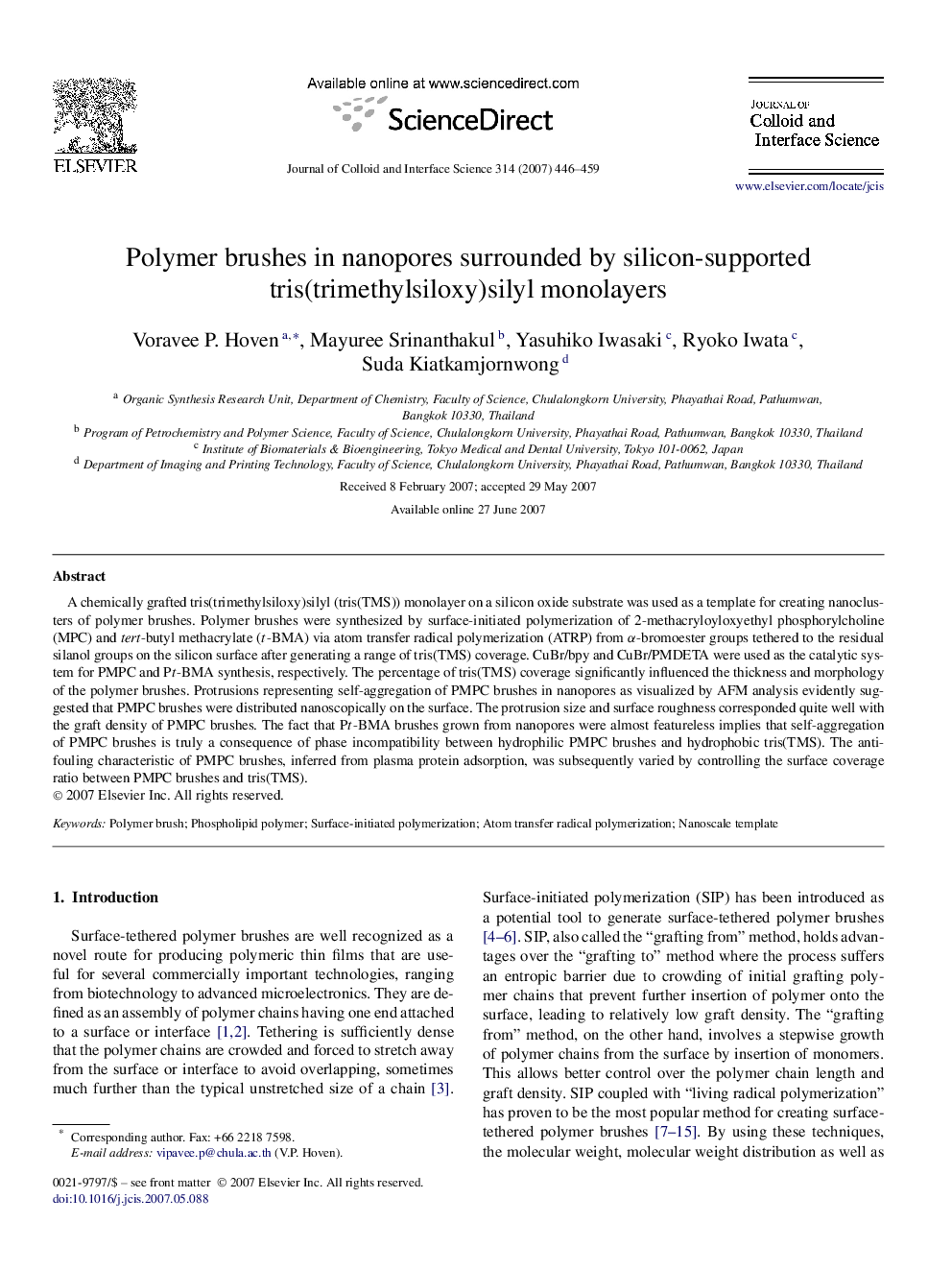| Article ID | Journal | Published Year | Pages | File Type |
|---|---|---|---|---|
| 612111 | Journal of Colloid and Interface Science | 2007 | 14 Pages |
A chemically grafted tris(trimethylsiloxy)silyl (tris(TMS)) monolayer on a silicon oxide substrate was used as a template for creating nanoclusters of polymer brushes. Polymer brushes were synthesized by surface-initiated polymerization of 2-methacryloyloxyethyl phosphorylcholine (MPC) and tert-butyl methacrylate (t-BMA) via atom transfer radical polymerization (ATRP) from α-bromoester groups tethered to the residual silanol groups on the silicon surface after generating a range of tris(TMS) coverage. CuBr/bpy and CuBr/PMDETA were used as the catalytic system for PMPC and Pt-BMA synthesis, respectively. The percentage of tris(TMS) coverage significantly influenced the thickness and morphology of the polymer brushes. Protrusions representing self-aggregation of PMPC brushes in nanopores as visualized by AFM analysis evidently suggested that PMPC brushes were distributed nanoscopically on the surface. The protrusion size and surface roughness corresponded quite well with the graft density of PMPC brushes. The fact that Pt-BMA brushes grown from nanopores were almost featureless implies that self-aggregation of PMPC brushes is truly a consequence of phase incompatibility between hydrophilic PMPC brushes and hydrophobic tris(TMS). The anti-fouling characteristic of PMPC brushes, inferred from plasma protein adsorption, was subsequently varied by controlling the surface coverage ratio between PMPC brushes and tris(TMS).
Graphical abstractFigure optionsDownload full-size imageDownload as PowerPoint slide
